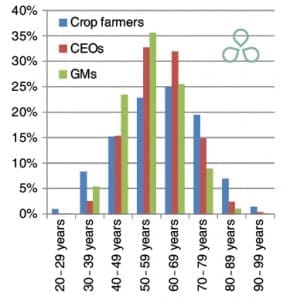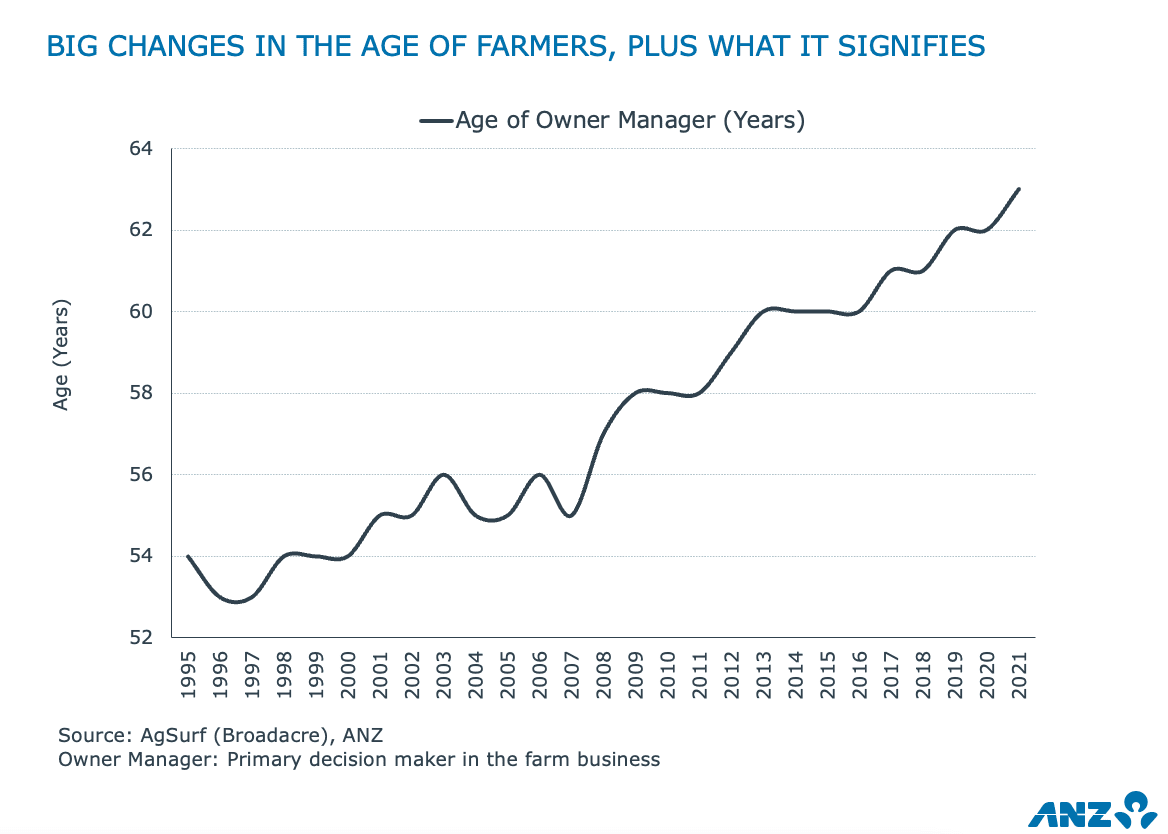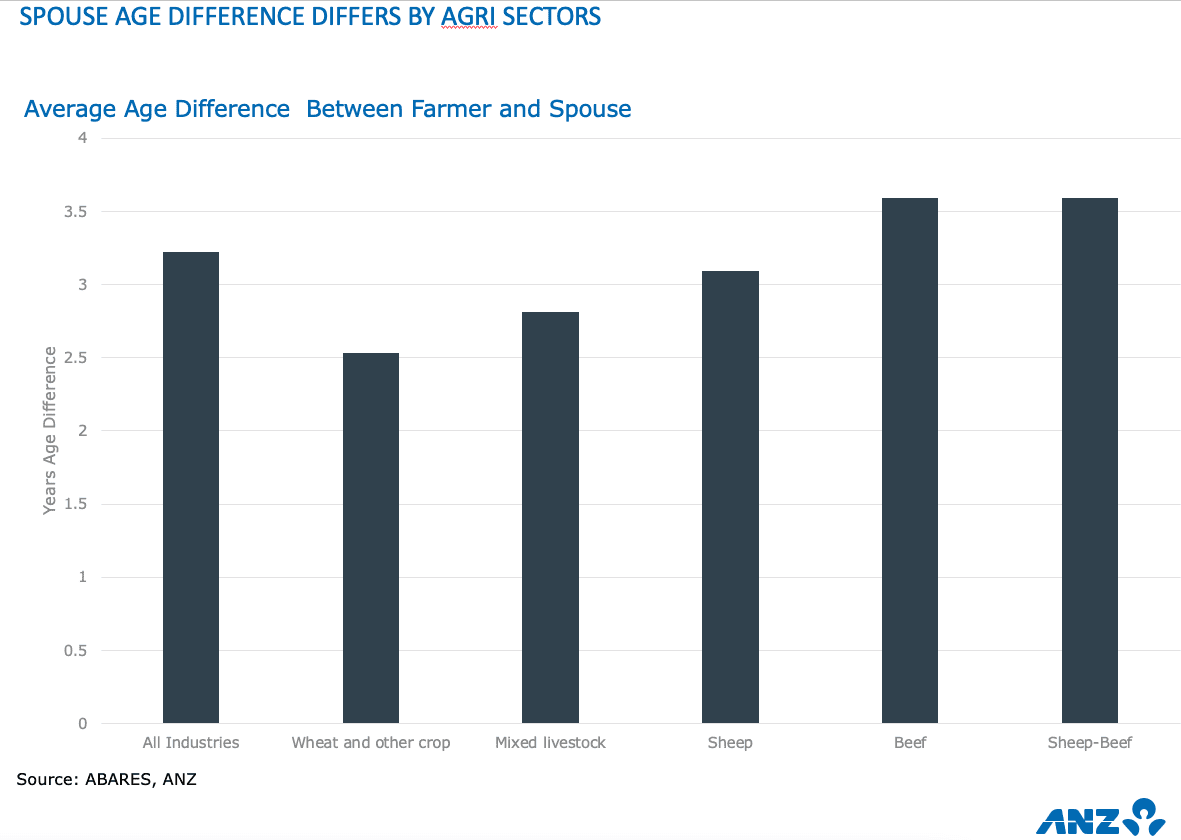EVERY few years new data emerges showing the average age of Australian farmers is getting older and older.
In the early 1990s the average age of Australian broadacre farmers, according to Government statisticians, was reported as being in the 52-53 year old range.
Over the years that number has gradually shifted upward, to the mid 50s, late 50s, and most recently, as ANZ head of agri insights Michael Whitehead pointed out in an address to the Rural Press Club of Queensland last week, to 63 years of age, according to ABARES data released in February.
With those stats inevitably comes unkind comparisons between agriculture and other sectors and warnings about implications for the future productivity and competitiveness of Australian agriculture.
But nor does it usually take long for a deeper analysis to illustrate the figures are not entirely representative of the actual age of those who make up the ranks of Australian farmers.
“The myth of the ageing farmer”
In his days as Australian Farm Institute executive director, ACCC ag commissioner Mick Keogh drew attention to “myth of the ageing farmer”.
Comparing the average age of farm owners/managers with the average age of all workers in the Australian workforce was not a valid comparison and created a distorted picture of farmers, he wrote in a previous article on Beef Central.
Sourcing sufficient finance to be able to acquire multi-million dollar farm business required significant assets, which automatically biased the age of farmers towards an older demographic.
A more valid analysis would be to compare the average age of farmers with the average age of Chief Executive Officers (CEOs) and General Managers (GMs) in the Australian workforce, he suggested, given the relative level of responsibility of each of these groups.
AFI analysis at the time showed the average age of Australian crop farmers was actually slightly younger than the average age of CEOs and GMs in the Australian workforce, and that the farmer population had a younger age profile than the population of CEOs or GMs:

Comparison of the average age of Australian farmers with the average age of Chief Executive Officers and General Managers. Source: AFI
AFI research has also demonstrated that the average age of farm owners or managers actually decreases with farm size.
This reflected the down-scaling trend of older farmers who sell off most of their farm but retain or buy a smaller block as they move into retirement, and urban retirees who move to the bush and become ‘tree-changers’ and run a few cows. These categories collectively produced a small share of overall farm input but were still relatively large in number and distorted the ‘average’ age of farmers upwards.
At the other end of the scale, ABARES data has previously shown that the average age farmers and managers running larger farms in Australia are an average of almost 10 years younger than the average age of the farmers owning farms that are in the smallest annual output category, and five years younger than the ‘average’ Australian farmer.
The reason over-simplistic analyses are a problem, Mr Keogh wrote, is that they add to the risk that policy-makers focus on the wrong issues when it comes to decisions about what policies might best help the Australian farm sector respond to future opportunities and challenges.
In his address the Rural Press Club of Queensland last week Mr Whitehead noted that data outcomes may also be reflective of the age of the person in each farming business who sat down at the kitchen table to fill in the survey.
But he added that the trend showing a rising age of farmers documented in official data also reflects that turnover of Australian farms that many people thought would happen several years ago has been delayed, and that generational change that cannot be forestalled forever will start to show up in the same data in coming years.
The family farm is back
He said one of the key points illustrated in ANZ’s Greener Pastures 2 report released late last was the return to “the two-generation farm”, noting that “the family farm is back”.
“We’re now seeing people come back to family farms, we’re seeing the growth of technology, business opportunities, and particularly regional centres and everything they offer mean that is growing.
“And that is very much, from a land price point of view, helping with that economic phenomenon of land prices – buying the neighbours so we can increase the size of our family farm for the next generation.”
One more interesting piece of age-related data released by ABARES earlier this year from its surveys of Australian farmers highlighted the average age difference between a farmer and their spouse:
“You will be shocked to know that the narrowest age difference between farmers and their spouses is in the grain industry, and the biggest the age difference between a farmer and their spouse is in the meat industry, in beef and sheepmeat operations.”
But working out what to read into that was not something Mr Whitehead was prepared to take a stab at.
“Now this probably has a very important meaning for the future of agriculture in Australia, and if anyone knows vaguely what it is, please let us know.”




